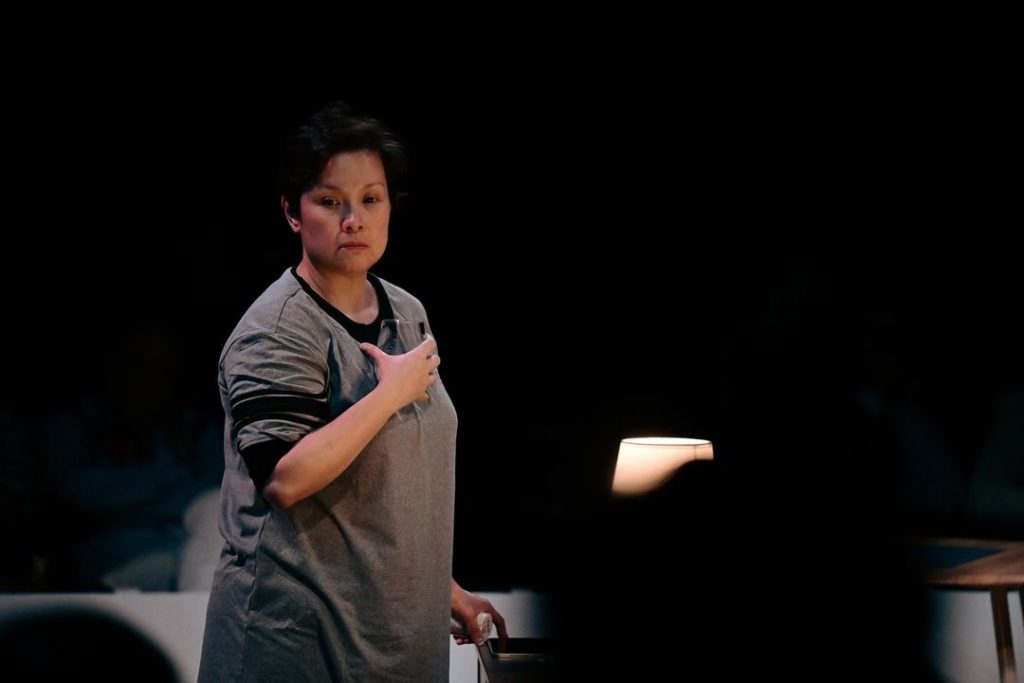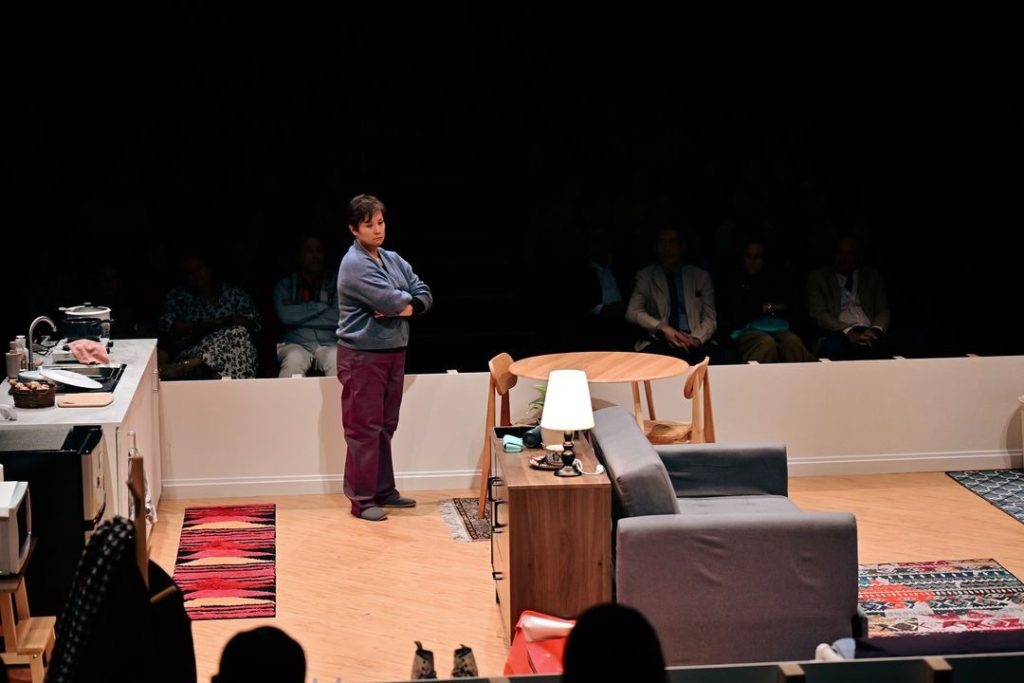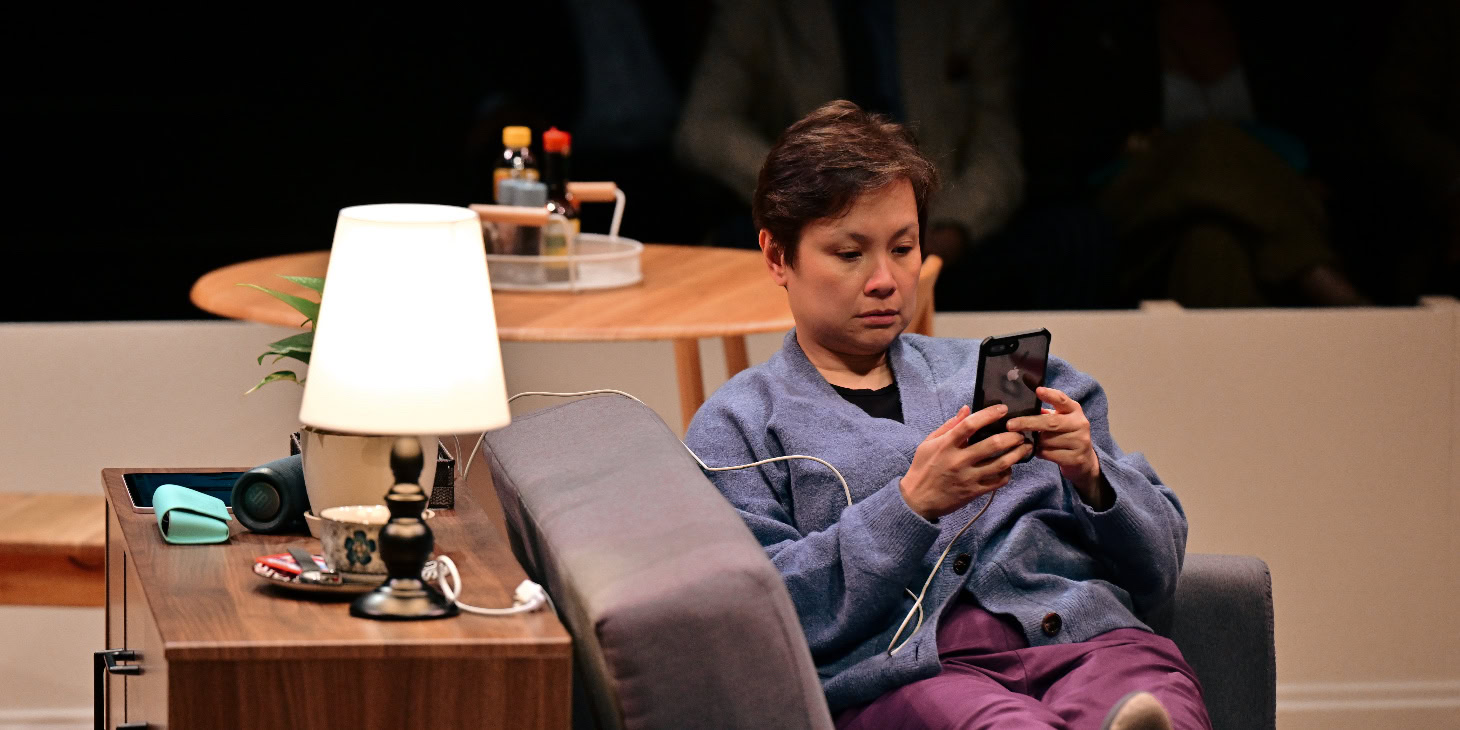There’s a unique kind of bravery whenever you choose to mount a play with any measure of realism. Our everyday lives, no matter how exciting they may seem to others, are often defined by its routines, and the monotony of moving through time and space in repeating patterns. This couldn’t be farther away from the “heightened” reality of theatre, where everything is a five-alarm fire. It doesn’t come as a surprise therefore that in its silence, Franz Xaver Kroetz’s “Request sa Radyo” blows apart the audience’s notions about what makes compelling theatre and simultaneously splits opinions down the middle with about the same amount of subtlety as a hand grenade.

From the unconventional production design by Tony award-winning designer Clint Ramos, which made use of the imposing visual of container vans symbolizing the commodification of Filipino labor, to the fully functional apartment where the action happens, it all serves to orient the audience towards the main conceit of the play: you are invited to experience first hand, the very quintessence of the loneliness well-known by countless displaced workers exported to the farthest corners of the world. With the echoes of popular OPM songs over the eponymous phone-in streaming radio station as the only umbilical cord that ties them to their homeland.
“Request sa Radyo” blows apart the audience’s notions about what makes compelling theatre and simultaneously splits opinions down the middle with about the same amount of subtlety as a hand grenade.
The play opens with a woman (Lea Salonga/Dolly De Leon) arriving home to an empty apartment. What follows is the slow, gradual unfolding of what presumably is her regular evening routine. She proceeds to prepare her evening meal, eats, washes up, and goes through a series of activities that on the surface are much like our own. It is fascinating to watch all of this happen in real time, inviting the audience to ponder on the sheer mechanical nature of the modern human experience, and in turn allows the audience the time to examine their own habits, and see their own mundane, ordinary lives reflected back at them.

This makes for some extremely uncomfortable viewing. For people who are unaccustomed to being alone with their thoughts, and those who are perpetually in a state of social engagement, this will be a physically painful hour-and-a-half. There is so little that happens beyond the subtle gestures, and facial expressions, that the average Filipino theatergoer can (almost) be forgiven if they disassociate a little bit. The material, despite the lack of any discernible dialogue beyond the lyrics of the OPM classics playing over the radio, does have a compelling narrative, albeit one that is hard nut to crack.
The way the play is structured, presented, and performed, it is a masterpiece in every sense of the word, and is a shining example of the adage “less is more”— Nothing is superfluous. Everything is necessary, in the exact amount required.
Headlined by two of the Philippine’s brightest stars, Lea Salonga and Dolly De Leon, the success and failure of the show is completely dependent on their uncanny ability to convey complex emotions without speaking. Salonga, known worldwide for her vocal ability is virtually unrecognizable in this: dressed in everyday clothes, without a gram of makeup on her face, her performance was a masterclass in subtlety. As she goes about her evening, everything you need to know about her character, her personality, is echoed by the many small movements and looks that move the plot forward, inch by excruciating inch. Even the manner and posture by which she eats, or the way she takes the time to pat down her fresh clothes as she places them on the backrest of a chair to ensure it doesn’t fall, or even how her face reacts as idle thoughts race across her mind as she uses the toilet, they are all part of a puzzle that gets solved one piece at a time.
And this is where it gets a little sticky. It is a concept that is so cerebral, so unconventional, that Filipino audiences may have a difficult time getting on board and it runs the very real risk of flying over people’s heads. It requires a lot of mental and emotional buy-in and would not work otherwise. It requires you to adopt a hyper focused state, achieving a kind of tunnel vision that allows you to scrutinize every microscopic thing that happens onstage. It is really ordinary and abstract on the surface, and leaves it up to its audience to do the stitching, therein lies the hidden genius of this play. The way the play is structured, presented, and performed, it is a masterpiece in every sense of the word, and is a shining example of the adage “less is more”— Nothing is superfluous. Everything is necessary, in the exact amount required.
It is the year’s best play thus far. Narrowly beating out the brilliant “Grace” from earlier this year, for the simple reason that it generated and conveyed the same amount of emotional tension and resonance with literally no words at all. It explores its themes of isolation, loneliness, and the dark side of the Filipino diaspora with a deft and sensitive hand. If you are willing to step out of your comfort zone and try something new, then go with an open mind— It is worth every tortured second, and roundly deserves its ovations.
Click here for more stories like “Request sa Radyo”. You may also follow and subscribe to our social media accounts: Facebook, YouTube, Instagram, TikTok, Twitter, and Kumu.






















